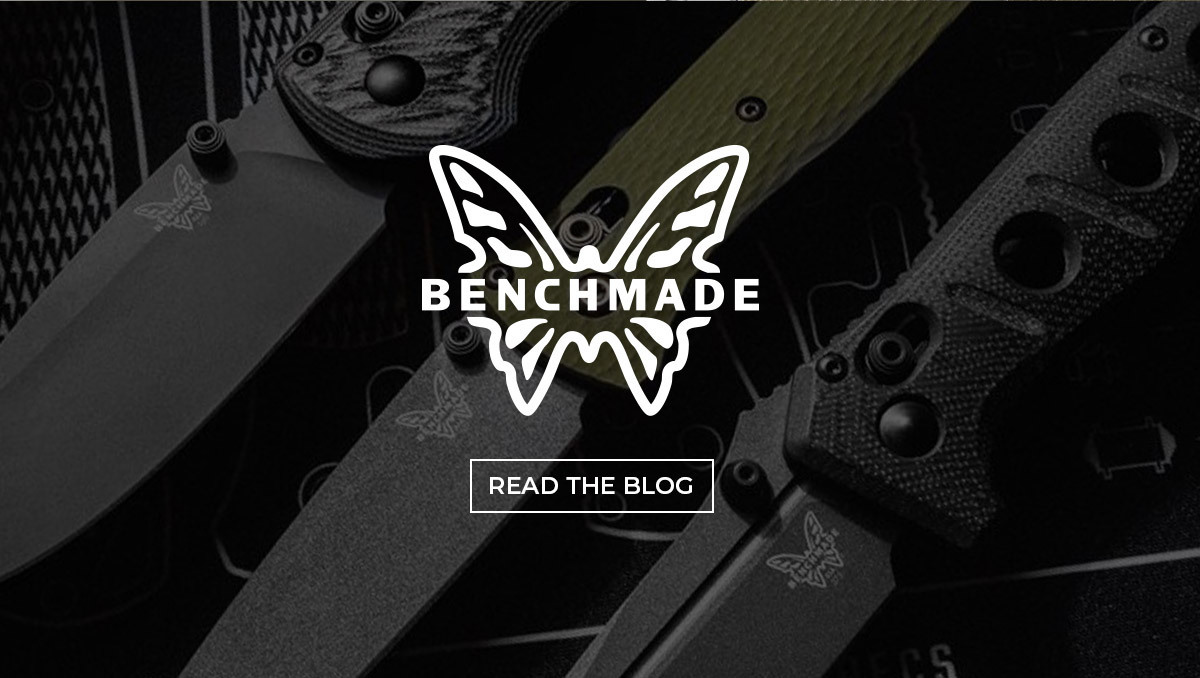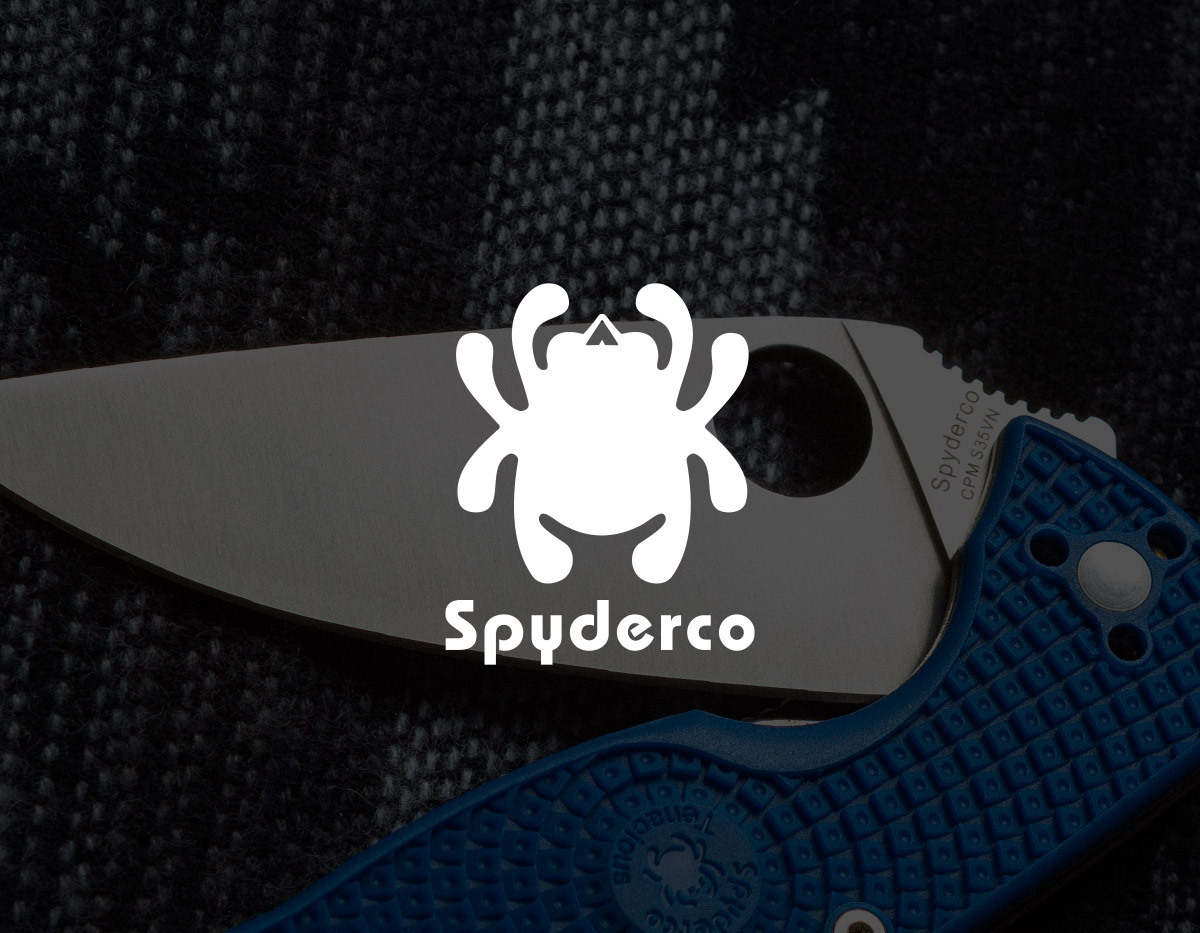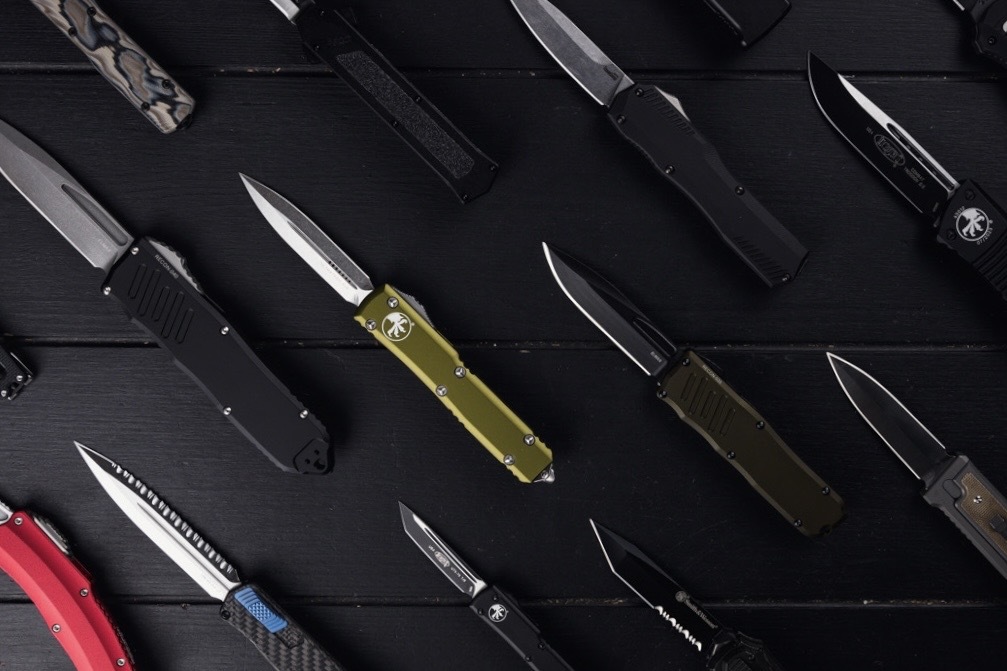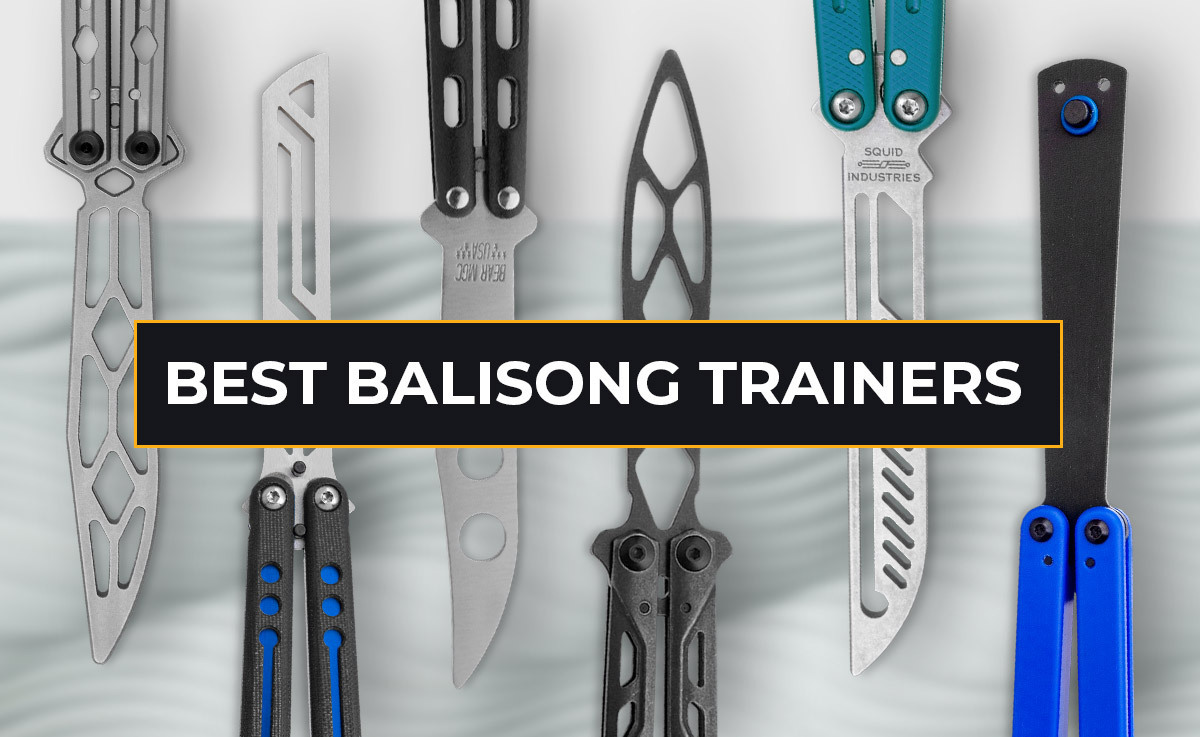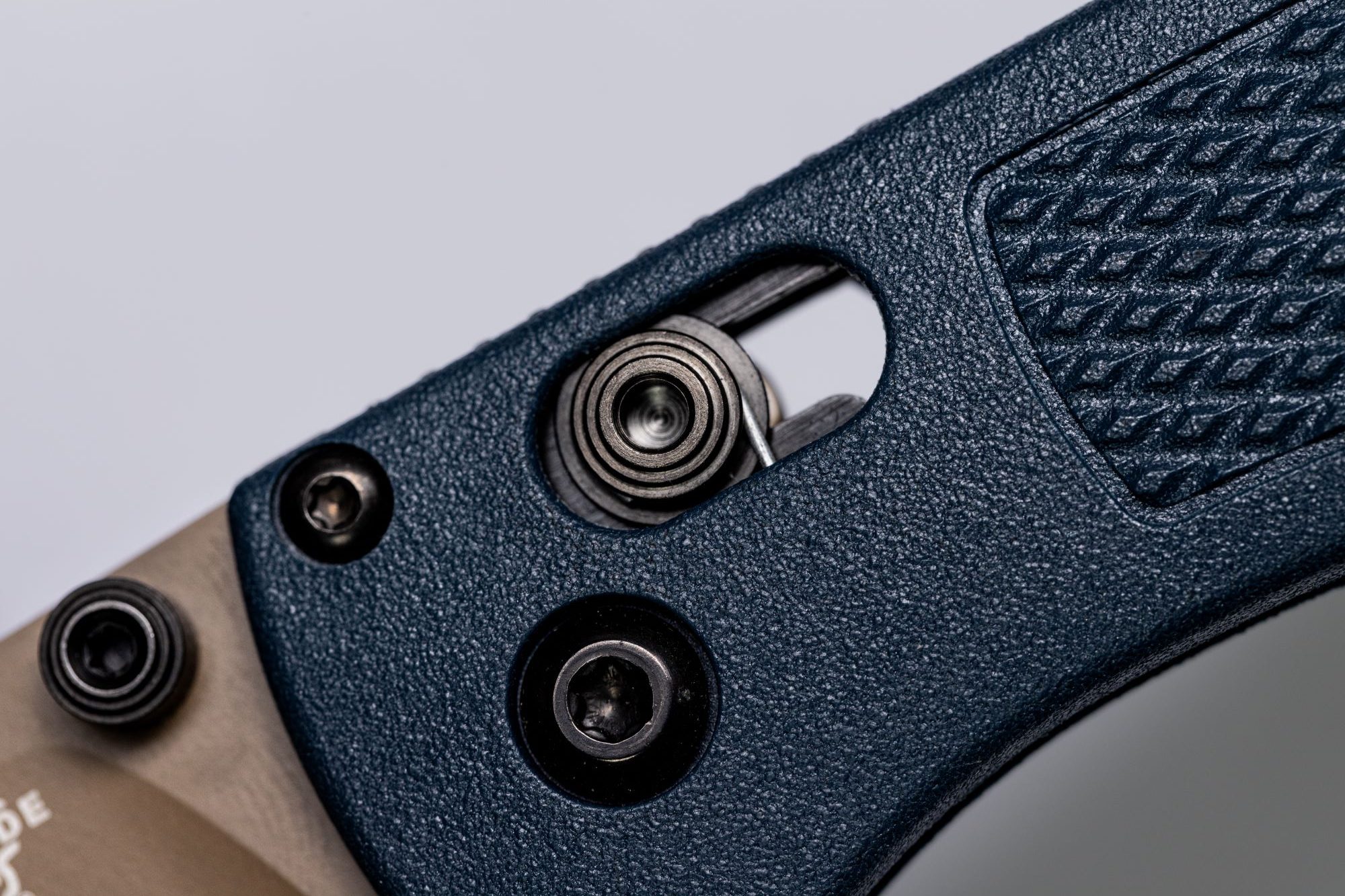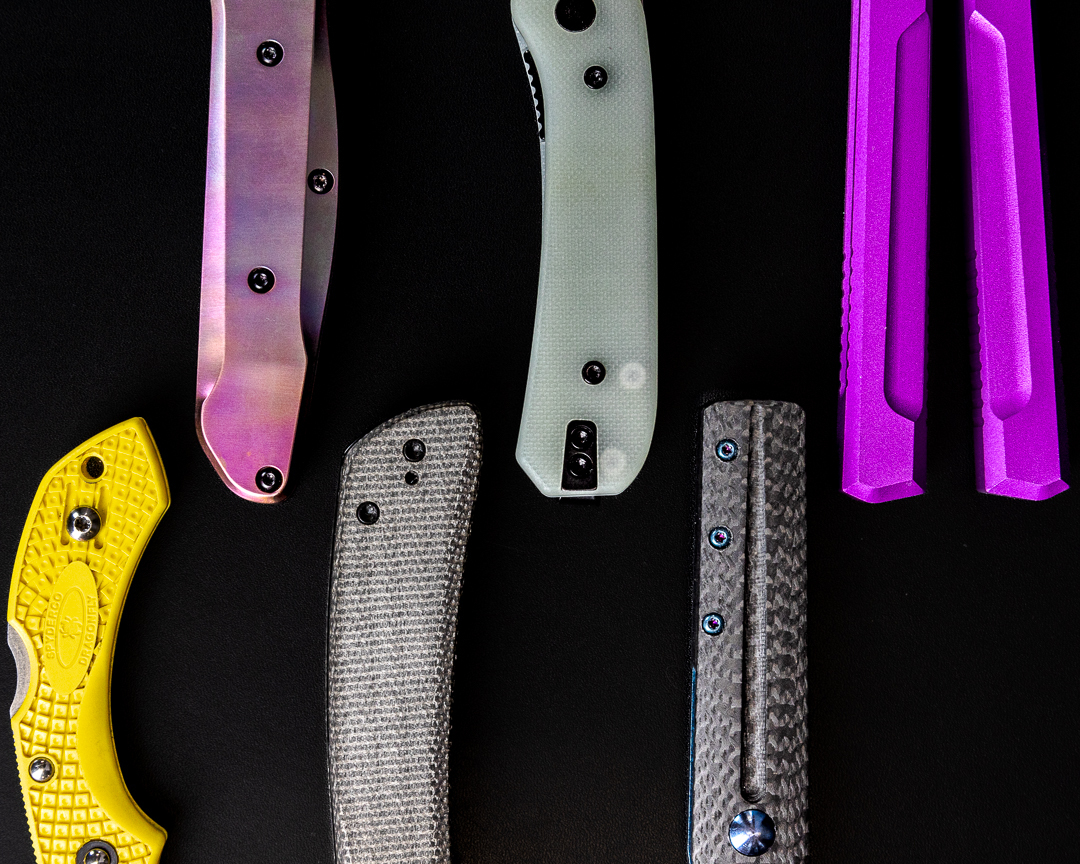A guide to unique knife opening mechanisms and how to open each type of pocket knife.

My family always knows when I’m coming, whether I’m emerging from the depths of the basement, walking in after work, or joining them on the porch. They say, “Here he comes!” even before seeing me. How do they know I’m coming? Simple: I’m heralded by my pocket knife’s click, click, click as I fidget with it. There’s an undeniable satisfaction to opening and closing a knife. If you have a loved one constantly fidgeting with their folder, maybe you’ve wondered, “Can I do that? Can I have that joy?”
The answer is, of course, yes, and in this article, I’m going to teach you how.
How to Open a Pocket Knife – Knife Opening Mechanisms and Openers
There are two things to consider when opening a pocket knife: The knife’s opening mechanism and the knife’s opener. Generally, the former is the mechanism built into the knife that facilitates the blade’s deployment, and the latter is the system you engage to activate that mechanism.
Knife Opening Mechanisms
Manual Knives

For these knives, you are the opening mechanism. Manual pocket knives often have a lock to keep the blade from closing on your fingers. Some exceptions are tight-pivoted friction folders, slip joint knives that employ a leaf spring (usually) to add a detent that must be overcome to close the blade, and free-swinging butterfly knives. The benefit of manual pocket knives is you’re in control of the entire process, and they’re arguably the best for fidgeting, not to mention the wide variety available!
Assisted Opening Knives (Spring Assisted Knives)

This mechanism varies mechanically between manufacturers, but each system serves the same purpose: to propel the blade into the open position. Your role is to press a lever, thumb stud, or flipper tab to overcome a detent; once done, the spring or other mechanism “assists” the blade the rest of the way. It’s easy and fast to open these knives with one hand but closing them requires fighting the spring or other system that propelled the blade, reducing the fidget factor for some users. The Kershaw Leek and Gerber Highbrow are two good examples.
Automatic Knives (Switchblade Knives)

These cutters also use a spring but take the “assisted” out of the question. With one push of a button (or one push on the lever for lever-action autos), the blade fires out and locks in place, ready to work. It’s undeniably addictive, that press and subsequent snap, but the fidget cycle is interrupted in the same way that knives with a spring assisted mechanism are. If you need a knife that you can get into action immediately, with only one hand, an auto is the way to go. I recommend the Pro-Tech SBR and anything from the Kershaw Launch series.
Double-Action OTF Automatic Knives
This type of switchblade knife has something of a long name. Let’s break it down: Double action means the knife automatically opens and closes when you engage the thumb slide; OTF stands for “Out The Front,” indicating that the blade fires out through the top of the handle instead of swinging out its side. I already covered automatic knives above, but thanks to this knife’s double-action switchblade mechanism, the fidget factor shoots through the roof. With one hand, you can fire the blade between the open and closed position repeatedly and rapidly. The Microtech Ultratech and Guardian Tactical RECON-035 are examples of this mechanism done masterfully.
Dual-Action Knives

What’s the difference between a dual-action knife and a double-action knife? Generally, the former has two unique knife opening mechanisms bundled into one cutter, and the latter refers to knives whose blades can automatically be deployed and retracted. Your typical dual-action pocket knife will feature a manual mechanism employing a flipper or thumb stud opener and an automatic mechanism with a button or hidden release opener, which are all explained below. Dual action knives are rare and often only produced by custom knife makers.
Pocket Knife Openers – How to Open a Pocket Knife of Any Type
Nail Nick Opener

When it comes to pocket knives, there’s nothing more classic than the nail nick opener. Most common on traditional pocket knives, this opener appears as a shallow slit in the knife’s blade and is typically paired with a slip joint system. Nail nicks are simple, straightforward, and recognizable, but require two hands and can sometimes damage your fingernail. Follow the steps below to open a knife with a nail nick opener.
- Hold the knife in your dominant hand, keeping your fingers clear of the blade’s opening path.
- With your other hand, insert your thumbnail into the nail nick and pull the blade free. (Tip: Sometimes you can pinch the blade and, using the nail nick to provide purchase, pull the knife open to avoid hurting your thumbnail.)
Thumb Stud (Thumb Lug), Thumb Hole, Thumb Disk, and Thumb Groove Openers

These four opener types work on the same principle, letting you use your thumb to walk the blade open. A thumb stud is a small knob attached to the blade, a thumb hole is a hole through the blade, a thumb disc is a separate little plate attached perpendicularly to the blade, and a thumb groove is a milled-out channel along the blade (essentially a fuller). Each is positioned within reach of your thumb. These provide one-handed opening and great fidgeting, but some users find them difficult to master. Follow the steps below to open a knife with any of these openers.
- Hold the knife in your dominant hand, keeping your fingers clear of the blade’s opening path. (Tip: If the knife has a frame lock, putting pressure on it will make opening your knife harder because it makes the detent more difficult to overcome. Try resting your fingers on the pocket clip instead.)
- Press your thumb under the thumb stud/disk (or under the top edge of the thumb hole/groove) and push out at 45°. When you overcome the detent, the blade will pop out, and you can walk it into the open position with your thumb. (Tip: With practice, you can flick the blade all the way open with just one determined push. This is extremely satisfying once you get it down!)
Spyderco popularized thumb holes with their iconic Round Hole opener. Fans of their knives devised a way to flick open many of their models with their middle finger, dubbing the action the “Spydie flick.” Though it’s easiest with a thumb hole, you can Spydie flick most knives with the above openers. Flick opening can be tricky, posing a fun challenge to overcome. Try using different grips and opening the blade with different fingers if you get bored with the most popular method, which you can learn by following the steps below.
- In your dominant hand, anchor your knife’s handle in the base of your palm and pinch it between your extended thumb and forefinger. Extend your ring and little fingers out of the path of the blade. (Tip: Getting the grip just right is challenging. Some users find it easier to grip the pocket clip with their ring and little fingers instead of extending them away. Experiment and find the grip that works best for you.)
- Rest the nail of your middle finger under the top edge of the thumb hole/groove (or the pad of your middle finger under the thumb stud/disk) and flick the blade out. (Tip: If the blade isn’t opening all the way, try flicking your wrist while you flick your finger.)
Flipper Opener

Flipper knives have the CRKT Carson M16 to thank for popularizing the flipper tab. Nowadays, the flipper is considered one of the best opening methods: it’s fast, reliable, ambidextrous, one-handed, and easy to use. If a flipper knife has a ball-bearing pivot—or just a smooth pivot—you’re in for hours of quality fidgeting and can rest assured knowing you can get your knife open with one hand at a moment’s notice. Follow the steps below to open any knife with a flipper tab.
- Hold the knife in your dominant hand, keeping your fingers clear of the blade’s opening path. (Tip: If the knife has a frame lock, putting pressure on it will make opening your knife harder because it makes the detent more difficult to overcome. Try resting your fingers on the pocket clip instead.)
- Place your index finger on the top of the flipper tab and slide your finger down the handle’s spine. The blade will resist at first, then pop open. (Tip: If you’re having trouble getting the blade to open all the way, try pushing harder with your finger or flicking your wrist.)
Button Opener

Out-the-side automatic knives, designed to reliably open in even the most trying circumstances, almost exclusively run with a button opener. You’ll also find button openers coupled with flipper tabs and thumb studs on manual knives. For these knives, the button serves as more of a lock than an opener, though many users find pushing the button and flicking their wrist an effective and entertaining way to open their button lock knives. For that reason, a button lock knife with a flipper tab and a thumb stud might be the best option if you’re looking for max fidget-ability in your EDC knife. Follow the steps below to learn how to open a switchblade with a button lock.
- Tightly hold the knife in your dominant hand, keeping your fingers clear of the blade’s opening path. (Tip: Spring-loaded knives often open with authority—maintain a firm grip so it doesn’t jerk out of your hand!)
- Push the button with your thumb, releasing the blade. (Tip: For left-handed users, try pressing the button with your index finger.)
Thumb Slide Opener

Thumb slides are found on double-action OTF automatic knives, providing the one-handed, powerful opening of button lock automatic knives without the difficulty of closing that kind of knife. While OTF knives introduce problems of their own, like blade play and the possibility of coming off track, opening and closing the knife is straightforward and, well, straight-backward. Follow the steps below and you’ll see what I mean.
- Hold the knife in your dominant hand, keeping your fingers clear of the blade’s firing path. (Tip: Firing the knife into anything remotely firm will cause the blade to come off track, moving freely in and out. To get the knife back on track, pinch the blade’s flat and extend it fully until you hear the click of it locking open.)
- Push the slide to the top position with your thumb. This puts the blade under spring tension and then releases it, firing it into the open position.
- To close the knife, pull the slide back down. This puts the blade under spring tension and then releases it, retracting it into the handle.
Wave Opener

The Emerson Wave opener was designed to open your pocket knife as you draw it from your pocket. It’s often coupled with other openers, like the thumb hole in the LionSteel L.E.One. By itself, it looks like a miniature crashing wave on the spine of your knife. It adds tons of points to the knife’s wow factor and to its tactical application but does little for the fidget factor. It’s arguably the fastest way to get a knife into action, but your selection is limited due to the Wave opener’s exclusivity. If you’re interested, consider the Southern Grind Bad Monkey, the Spyderco Delica C11PGYW, and any knife from the Kershaw Emerson series. Follow the steps below to learn how to use one.
- Grab your knife in your pocket with your thumb on the inside and your fingers on the outside on the pocket clip. Make sure none of your fingers are in the opening path of the blade.
- Draw your knife, pressing its blade’s spine against the inside of your pocket. The Wave will catch your pocket and pull the blade into the open position.
Hidden Release Opener

There’s no standard for hidden-release knives—and the mystery is part of the appeal! Typically, these are automatic knives with a disguised opener that, when pushed or pulled, releases the blade to spring open, like the Pro-Tech Magic BR-1. Each opener is unique to the knife, so I can’t give you a step-by-step how-to, but if you adhere to the principles in the above guides, you’re sure to find the best way to open your hidden release knife in no time!
Butterfly Knives

Opening and closing butterfly knives (or balisongs) is an art. You can perform countless neat tricks to deploy and stow the blade if you’re willing to risk getting your fingers bitten. Flipping balisongs is a surefire way to impress anyone watching and is more for that purpose than anything practical; though, I’d be remiss not to mention butterfly knives are great one-handed cutters once you get the hang of how to swing one around. Plus, some include latches that keep them open and closed for easy carry, like the Bear and Son balisong featured here. I won’t cover any of that here, but I’ll explain a basic two-handed method below.
- Hold your butterfly knife in both hands, each hand holding one handle.
- Open both handles simultaneously and lock the blade with a latch (if your butterfly knife has one).

Now You Know How to Open a Pocket Knife!
Opening pocket knives will become second nature with practice—every knife opening mechanism and opener will be a playground for your fingers. But these are sharp tools we’re dealing with. It’s important to remember safety: Never open or use knives irresponsibly or in inappropriate places. Spring-assisted knives, switchblades, and balisongs can be especially dangerous. Always maintain a firm grip on the knife and ensure nothing is in the blade’s opening path. Check out this article for more switchblade safety tips.
Now, whatever knife comes your way, you’ll be ready to open it to your heart’s content. You’re prepared to taste the endless entertainment that is fidgeting with a pocket knife. Maybe your loved ones, like mine, will say, “Here comes [your name here]!” as you approach, knife in hand, sounding off a series of satisfying clicks.
